
List of Heads of State of Argentina
Encyclopedia
Argentina
has had many different types of heads of state, as well as many different types of government throughout its history
. During Pre-Columbian times the territories that nowadays belong to Argentina were mainly inhabited by nomadic tribes, without any defined government. During the Spanish colonization of the Americas, the King of Spain retained the ultimate authority over the territories conquered in the New World
, designating viceroy
s for local government. The territories that would later belong to Argentina were first part of the bigger Viceroyalty of Peru
, and then of the Viceroyalty of the Río de la Plata
. The May Revolution
started the Argentine War of Independence
by replacing the viceroy Baltasar Hidalgo de Cisneros
with the first national government. It was the Primera Junta
, a junta
of several members, which would grow into the Junta Grande
with the incorporation of provincial deputies. The size of the Juntas gave room to internal political disputes among their members, so they were replaced by the First
and Second Triumvirate
, of three members. The Assembly of the Year XIII
created a new executive authority, with attributions similar to that of a head of state, called the Supreme Director of the United Provinces of the Río de la Plata
. A second Assembly, the Congress of Tucumán
, declared independence
in 1816 and promulgated the Argentine Constitution of 1819
. However, this constitution was repealed during armed conflicts
between the central government
and the Federal League
Provinces. This started a period known as the Anarchy of the Year XX, when Argentina lacked any type of head of state.
There was a new attempt to organize a central government in 1826. A new congress wrote a new constitution, and elected Bernardino Rivadavia
as president
in the process. Thus Rivadavia was the first president of Argentina. However, he resigned shortly after, and the 1826 constitution was repealed. The Argentine provinces then organized themselves as a confederation
, without a central head of state. In this organization, the governors of Buenos Aires province
took some duties such as the payment of external debt or the administration of the foreign relations
in the name of all provinces. Those governors were designated by the Buenos Aires legislature, with the only exception of Juan Lavalle
. Juan Manuel de Rosas
kept the governor office for seventeen consecutive years, until Justo José de Urquiza
defeated him at the 1852 Battle of Caseros
. Urquiza then called for a new Constitutional Assembly, and promulgated the Argentine Constitution of 1853
, which is the current Constitution of Argentina
through amendments. In 1854, Urquiza became the first President of modern Argentina
, acting both as head of government and head of state. However, the Buenos Aires Province
had rejected the Constitution and became an independent state until the aftermath of the 1859 Battle of Cepeda
, although the internecine conflict continued. Only after the subsequent Battle of Pavón
, in 1861, the former bonaerense leader, Bartolomé Mitre
, became the first president of a unified Argentine Republic.
The succession line of constitutional presidents run uninterrupted until 1930, when José Félix Uriburu
took government through a civico-military coup d'état
. For many decades, there was an alternance between legitimate Presidents and others that took government through illegitimate means. Those means included coups, but also proscriptions of major political parties and electoral fraud. The last coup was the National Reorganization Process
, which left government in 1983. The retrospective recognition as presidents or heads of state of any de facto ruler that exercised its authority outside the Constitutional mandate is a controversial and relevant issue in Argentine politics. However, their government actions were recognized as valid following the de facto government doctrine
that used to legitimize them. This doctrine was rejected by the 1994 amendment, and wouldn't be applicable for potential future coups. The current head of State of Argentina is President Cristina Fernández de Kirchner
, who took office on 10 December 2007 for a four-year term.
Between 1820 and 1826, the Argentine Confederation functioned as a loose alliance of autonomous provinces, put together by pacts and treaties, but lacking an effective central government.
Argentina
Argentina , officially the Argentine Republic , is the second largest country in South America by land area, after Brazil. It is constituted as a federation of 23 provinces and an autonomous city, Buenos Aires...
has had many different types of heads of state, as well as many different types of government throughout its history
History of Argentina
The history of Argentina is divided by historians into four main parts: the pre-Columbian time, or early history , the colonial period , the independence wars and the early post-colonial period of the nation and the history of modern Argentina .The beginning of prehistory in the present territory of...
. During Pre-Columbian times the territories that nowadays belong to Argentina were mainly inhabited by nomadic tribes, without any defined government. During the Spanish colonization of the Americas, the King of Spain retained the ultimate authority over the territories conquered in the New World
New World
The New World is one of the names used for the Western Hemisphere, specifically America and sometimes Oceania . The term originated in the late 15th century, when America had been recently discovered by European explorers, expanding the geographical horizon of the people of the European middle...
, designating viceroy
Viceroy
A viceroy is a royal official who runs a country, colony, or province in the name of and as representative of the monarch. The term derives from the Latin prefix vice-, meaning "in the place of" and the French word roi, meaning king. A viceroy's province or larger territory is called a viceroyalty...
s for local government. The territories that would later belong to Argentina were first part of the bigger Viceroyalty of Peru
Viceroyalty of Peru
Created in 1542, the Viceroyalty of Peru was a Spanish colonial administrative district that originally contained most of Spanish-ruled South America, governed from the capital of Lima...
, and then of the Viceroyalty of the Río de la Plata
Viceroyalty of the Río de la Plata
The Viceroyalty of the Río de la Plata, , was the last and most short-lived Viceroyalty of the Spanish Empire in America.The Viceroyalty was established in 1776 out of several former Viceroyalty of Perú dependencies that mainly extended over the Río de la Plata basin, roughly the present day...
. The May Revolution
May Revolution
The May Revolution was a week-long series of events that took place from May 18 to 25, 1810, in Buenos Aires, capital of the Viceroyalty of the Río de la Plata, a Spanish colony that included roughly the territories of present-day Argentina, Bolivia, Paraguay and Uruguay...
started the Argentine War of Independence
Argentine War of Independence
The Argentine War of Independence was fought from 1810 to 1818 by Argentine patriotic forces under Manuel Belgrano, Juan José Castelli and José de San Martín against royalist forces loyal to the Spanish crown...
by replacing the viceroy Baltasar Hidalgo de Cisneros
Baltasar Hidalgo de Cisneros
Baltasar Hidalgo de Cisneros de la Torre was a Spanish naval officer born in Cartagena. He took part in the Battle of Cape St Vincent and the Battle of Trafalgar, and in the Spanish resistance against Napoleon's invasion in 1808. He was later appointed Viceroy of the Viceroyalty of the Río de la...
with the first national government. It was the Primera Junta
Primera Junta
The Primera Junta or First Assembly is the most common name given to the first independent government of Argentina. It was created on 25 May 1810, as a result of the events of the May Revolution. The Junta initially had representatives from only Buenos Aires...
, a junta
Junta (Peninsular War)
In the Napoleonic era, junta was the name chosen by several local administrations formed in Spain during the Peninsular War as a patriotic alternative to the official administration toppled by the French invaders...
of several members, which would grow into the Junta Grande
Junta Grande
Junta Grande is the most common name for the executive government of the United Provinces of the Río de la Plata , that followed the incorporation of provincial representatives into the Primera Junta .- Origin :...
with the incorporation of provincial deputies. The size of the Juntas gave room to internal political disputes among their members, so they were replaced by the First
First Triumvirate (Argentina)
The First Triumvirate was the executive body of government that replaced the Junta Grande in the United Provinces of the Río de la Plata...
and Second Triumvirate
Second Triumvirate (Argentina)
The Second Triumvirate was the governing body of the United Provinces of the Río de la Plata that followed the First Triumvirate in 1812, shortly after the May Revolution, and lasted 2 years....
, of three members. The Assembly of the Year XIII
Asamblea del Año XIII
The Assembly of Year XIII was a meeting called by the Second Triumvirate governing the young republic of the United Provinces of the Río de la Plata on October 1812....
created a new executive authority, with attributions similar to that of a head of state, called the Supreme Director of the United Provinces of the Río de la Plata
Supreme Director of the United Provinces of the Río de la Plata
The Supreme Director of the United Provinces of the Río de la Plata , was a title given to the executive officers of the United Provinces of the Río de la Plata, according to the form of government established in 1814 by the Asamblea del Año XIII...
. A second Assembly, the Congress of Tucumán
Congress of Tucumán
The Congress of Tucumán was the representative assembly, initially meeting in Tucumán, that declared the independence of the United Provinces of South America on July 9, 1816, from the Spanish Empire....
, declared independence
Argentine Declaration of Independence
What today is commonly referred as the Independence of Argentina was declared on July 9, 1816 by the Congress of Tucumán. In reality, the congressmen that were assembled in Tucumán declared the independence of the United Provinces of South America, which is still today one of the legal names of the...
in 1816 and promulgated the Argentine Constitution of 1819
Argentine Constitution of 1819
The Argentine Constitution of 1819 was a Constitution drafted by the Congress of Tucumán in 1819. It was promoted by Buenos Aires but rejected by the other provinces, and did not come into force.-Sanction:...
. However, this constitution was repealed during armed conflicts
Argentine Civil War
The Argentine Civil Wars were a series of internecine wars that took place in Argentina from 1814 to 1876. These conflicts were separate from the Argentine War of Independence , though they first arose during this period....
between the central government
United Provinces of South America
The United Provinces of South America was the original name of the state that emerged from the May Revolution and the early developments of the Argentine War of Independence...
and the Federal League
Liga Federal
The Federal League or League of Free Peoples was a confederal state based around Montevideo from 1815 to 1820...
Provinces. This started a period known as the Anarchy of the Year XX, when Argentina lacked any type of head of state.
There was a new attempt to organize a central government in 1826. A new congress wrote a new constitution, and elected Bernardino Rivadavia
Bernardino Rivadavia
Bernardino de la Trinidad Gónzalez Rivadavia y Rivadavia was the first president of Argentina, from February 8, 1826 to July 7, 1827 . He was a politician of the United Provinces of Río de la Plata, Argentina today...
as president
President
A president is a leader of an organization, company, trade union, university, or country.Etymologically, a president is one who presides, who sits in leadership...
in the process. Thus Rivadavia was the first president of Argentina. However, he resigned shortly after, and the 1826 constitution was repealed. The Argentine provinces then organized themselves as a confederation
Confederation
A confederation in modern political terms is a permanent union of political units for common action in relation to other units. Usually created by treaty but often later adopting a common constitution, confederations tend to be established for dealing with critical issues such as defense, foreign...
, without a central head of state. In this organization, the governors of Buenos Aires province
Governor of Buenos Aires Province
The governor of the Buenos Aires province is a citizen of the Buenos Aires Province of Argentina, holding the office of governor for the corresponding period. The governor is elected alongside a vice-governor. It must not be confused with the Mayor of Buenos Aires, as the city of Buenos Aires is a...
took some duties such as the payment of external debt or the administration of the foreign relations
Foreign relations of Argentina
This article deals with the diplomatic affairs, foreign policy and international relations of Argentina.At the political level, these matters are officially handled by the Ministry of Foreign Relations, also known as the Cancillería, which answers to the President...
in the name of all provinces. Those governors were designated by the Buenos Aires legislature, with the only exception of Juan Lavalle
Juan Lavalle
Juan Galo de Lavalle was an Argentine military and political figure.-Biography:Lavalle was born in Buenos Aires to María Mercedes González Bordallo and Manuel José de La Vallée y Cortés, general accountant of rents and tobacco for the Viceroyalty of the Río de la Plata.In 1799, the family moved to...
. Juan Manuel de Rosas
Juan Manuel de Rosas
Juan Manuel de Rosas , was an argentine militar and politician, who was elected governor of the province of Buenos Aires in 1829 to 1835, and then of the Argentine Confederation from 1835 until 1852...
kept the governor office for seventeen consecutive years, until Justo José de Urquiza
Justo José de Urquiza
Justo José de Urquiza y García was an Argentine general and politician. He was president of the Argentine Confederation from 1854 to 1860.He was governor of Entre Ríos during the government of Juan Manuel de Rosas, governor of Buenos Aires with powers delegated from the other provinces...
defeated him at the 1852 Battle of Caseros
Battle of Caseros
The Battle of Caseros was fought near the town of Caseros, more precisely between the present-day train stations of Caseros and Palomar in Buenos Aires Province, Argentina, on 3 February 1852, between the Army of Buenos Aires commanded by Juan Manuel de Rosas...
. Urquiza then called for a new Constitutional Assembly, and promulgated the Argentine Constitution of 1853
Argentine Constitution of 1853
The Argentine Constitution of 1853 was the first constitution of Argentina, approved with the support of the governments of the provinces —though without that of the Buenos Aires Province, who remained separated of the Argentine Confederation until 1859, after several modifications to the...
, which is the current Constitution of Argentina
Constitution of Argentina
The constitution of Argentina is one of the primary sources of existing law in Argentina. Its first version was written in 1853 by a Constitutional Assembly gathered in Santa Fe, and the doctrinal basis was taken in part from the United States Constitution...
through amendments. In 1854, Urquiza became the first President of modern Argentina
President of Argentina
The President of the Argentine Nation , usually known as the President of Argentina, is the head of state of Argentina. Under the national Constitution, the President is also the chief executive of the federal government and Commander-in-Chief of the armed forces.Through Argentine history, the...
, acting both as head of government and head of state. However, the Buenos Aires Province
Buenos Aires Province
The Province of Buenos Aires is the largest and most populous province of Argentina. It takes the name from the city of Buenos Aires, which used to be the provincial capital until it was federalized in 1880...
had rejected the Constitution and became an independent state until the aftermath of the 1859 Battle of Cepeda
Battle of Cepeda (1859)
The Battle of Cepeda of 1859 took place on October 23 at Cañada de Cepeda, Santa Fe, Argentina. The Republic of the Argentine Confederation army, led by Federal Justo José de Urquiza defeated the Province of Buenos Aires forces, led by Unitarian Bartolomé Mitre.-The battle in context:Before the...
, although the internecine conflict continued. Only after the subsequent Battle of Pavón
Battle of Pavón
The Battle of Pavón was a key battle of the Argentine civil wars fought in Pavón, in Santa Fé Province, Argentina, on September 17, 1861, between the Army of Buenos Aires, commanded by Bartolomé Mitre, and the National Army, commanded by Justo José de Urquiza...
, in 1861, the former bonaerense leader, Bartolomé Mitre
Bartolomé Mitre
Bartolomé Mitre Martínez was an Argentine statesman, military figure, and author. He was the President of Argentina from 1862 to 1868.-Life and times:...
, became the first president of a unified Argentine Republic.
The succession line of constitutional presidents run uninterrupted until 1930, when José Félix Uriburu
José Félix Uriburu
General José Félix Benito Uriburu y Uriburu was the first de facto President of Argentina, achieved through a military coup, from September 6, 1930 to February 20, 1932.-Biography:...
took government through a civico-military coup d'état
Coup d'état
A coup d'état state, literally: strike/blow of state)—also known as a coup, putsch, and overthrow—is the sudden, extrajudicial deposition of a government, usually by a small group of the existing state establishment—typically the military—to replace the deposed government with another body; either...
. For many decades, there was an alternance between legitimate Presidents and others that took government through illegitimate means. Those means included coups, but also proscriptions of major political parties and electoral fraud. The last coup was the National Reorganization Process
National Reorganization Process
The National Reorganization Process was the name used by its leaders for the military government that ruled Argentina from 1976 to 1983. In Argentina it is often known simply as la última junta militar or la última dictadura , because several of them existed throughout its history.The Argentine...
, which left government in 1983. The retrospective recognition as presidents or heads of state of any de facto ruler that exercised its authority outside the Constitutional mandate is a controversial and relevant issue in Argentine politics. However, their government actions were recognized as valid following the de facto government doctrine
De facto government doctrine
The de facto government doctrine is an Argentine case law related to the validity of the actions of de facto governments. It allowed the government actions taken during those times to stay valid after the de facto government had ended...
that used to legitimize them. This doctrine was rejected by the 1994 amendment, and wouldn't be applicable for potential future coups. The current head of State of Argentina is President Cristina Fernández de Kirchner
Cristina Fernández de Kirchner
Cristina Elisabet Fernández de Kirchner , commonly known as Cristina Fernández or Cristina Kirchner is the 55th and current President of Argentina and the widow of former President Néstor Kirchner. She is Argentina's first elected female president, and the second female president ever to serve...
, who took office on 10 December 2007 for a four-year term.
Junta presidents
| Portrait | Name (Birth–Death) |
Term of office | Notes | Refs |
|---|---|---|---|---|
| Cornelio Saavedra Cornelio Saavedra Cornelio Judas Tadeo de Saavedra y Rodríguez was a military officer and statesman from the Viceroyalty of the Río de la Plata... (1759–1829) |
25 May 1810 — 26 August 1811 | President of the Primera Junta Primera Junta The Primera Junta or First Assembly is the most common name given to the first independent government of Argentina. It was created on 25 May 1810, as a result of the events of the May Revolution. The Junta initially had representatives from only Buenos Aires... and the Junta Grande Junta Grande Junta Grande is the most common name for the executive government of the United Provinces of the Río de la Plata , that followed the incorporation of provincial representatives into the Primera Junta .- Origin :... , at the beginning of the Argentine War of Independence Argentine War of Independence The Argentine War of Independence was fought from 1810 to 1818 by Argentine patriotic forces under Manuel Belgrano, Juan José Castelli and José de San Martín against royalist forces loyal to the Spanish crown... . He had conflicts with Mariano Moreno Mariano Moreno Mariano Moreno was an Argentine lawyer, journalist, and politician. He played a decisive role in the Primera Junta, the first national government of Argentina, created after the May Revolution.... about government's policy. Left government to serve in the Army of the North Army of the North The Army of the North , contemporaneously called Army of Peru, was one of the armies deployed by the United Provinces of the Río de la Plata in the Spanish American wars of independence. Its objective was freeing the Argentine Northwest and the Upper Peru from the royalist troops of the Spanish... . He is regarded as the first president of a national government. |
||
| Domingo Matheu Domingo Matheu Domingo Matheu was a Spanish businessman and politician. He was a member of the Primera Junta, the first national government of modern Argentina.- Biography :... (1765–1831) |
26 August 1811 — 22 September 1811 | President of the Junta Grande, from Saavedra's departure to the dissolution of it. |
Triumvirates
| Members (Births–Deaths) Tenure |
|||
|---|---|---|---|
| First Triumvirate First Triumvirate (Argentina) The First Triumvirate was the executive body of government that replaced the Junta Grande in the United Provinces of the Río de la Plata... |
|||
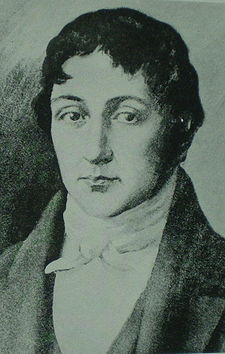 |
 |
||
| Feliciano Chiclana Feliciano Chiclana Feliciano Antonio Chiclana, was an Argentine lawyer, soldier, and judge, He studied at the Colegio de San Carlos. In 1783 he attained a law degree from the Universidad de Chile.... (1761–1826) |
Manuel de Sarratea Manuel de Sarratea Manuel de Sarratea, , was an Argentine diplomat, politician and soldier. He is the son of Martin de Sarratea , of the richest merchant of Buenos-Aires and Tomasa Josefa de Altolaguirre... (1774–1849) |
Juan José Paso Juan José Paso Juan José Paso, was an Argentine politician who participated in the events that started the Argentine War of Independence known as May Revolution of 1810.... (1758–1833) |
Juan Martín de Pueyrredón Juan Martín de Pueyrredón Juan Martín de Pueyrredón y O'Dogan was an Argentine general and politician of the early 19th century. He was appointed Supreme Director of the United Provinces of the Río de la Plata after the Argentine Declaration of Independence.-Early life:Pueyrredón was born in Buenos Aires, the fifth of... (1776–1850) |
| 22 September 1811 — 8 October 1812 | 22 September 1811 — 8 October 1812 | 22 September 1811 — 23 March 1812 | 23 March 1812 — 8 October 1812 |
| — | Resigned | Replaced Paso | |
| Second Triumvirate Second Triumvirate (Argentina) The Second Triumvirate was the governing body of the United Provinces of the Río de la Plata that followed the First Triumvirate in 1812, shortly after the May Revolution, and lasted 2 years.... |
|||
 |
 |
 |
|
| Juan José Paso Juan José Paso Juan José Paso, was an Argentine politician who participated in the events that started the Argentine War of Independence known as May Revolution of 1810.... (1758–1833) |
Nicolás Rodríguez Peña Nicolás Rodríguez Peña Nicolás Rodriguez Peña was an Argentine politician. Born in Buenos Aires in April 1775, he worked in commerce which allowed him to amass a considerable fortune. Among his several successful businesses, he had a soap factory partnership with Hipólito Vieytes, which was a center of conspirators... (1775–1853) |
Antonio Álvarez Jonte Antonio Álvarez Jonte Antonio Álvarez Jonte was an Argentine politician. He was born in Madrid in 1784 and moved with parents to Córdoba when young. He studied law at Córdoba University and obtained his doctorate at the Real Universidad de San Felipe in Santiago de Chile... (1784–1820) |
Gervasio Antonio de Posadas Gervasio Antonio de Posadas Gervasio Antonio de Posadas y Dávila was a member of Argentina's Second Triumvirate from 19 August 1813 to 31 January 1814, after which he served as Supreme Director until 9 January 1815.... (1757–1833) |
| 8 October 1812 — 31 January 1814 | 8 October 1812 — 31 January 1814 | 8 October 1812 — 19 August 1813 | 19 August 1813 — 31 January 1814 |
| — | Resigned | Replaced Álvarez Jonte | |
Supreme directors
| Portrait | Name (Birth–Death) |
Term of office | Notes | Refs |
|---|---|---|---|---|
 |
Gervasio Antonio de Posadas Gervasio Antonio de Posadas Gervasio Antonio de Posadas y Dávila was a member of Argentina's Second Triumvirate from 19 August 1813 to 31 January 1814, after which he served as Supreme Director until 9 January 1815.... (1757–1833) |
Chosen by the Assembly of the Year 1813 Asamblea del Año XIII The Assembly of Year XIII was a meeting called by the Second Triumvirate governing the young republic of the United Provinces of the Río de la Plata on October 1812.... . |
||
| Carlos María de Alvear Carlos María de Alvear Carlos María de Alvear was an Argentine soldier and statesman, Supreme Director of the United Provinces of the Río de la Plata in 1815.... (1789–1852) |
Forced to resign by a mutiny | |||
| José Rondeau José Rondeau José Casimiro Rondeau Pereyra was a general and politician in Argentina and Uruguay in the early 19th century.-Biography:... (1773–1844) |
Designated successor of Alvear, could not take office because he was in command of the Army of the North Army of the North The Army of the North , contemporaneously called Army of Peru, was one of the armies deployed by the United Provinces of the Río de la Plata in the Spanish American wars of independence. Its objective was freeing the Argentine Northwest and the Upper Peru from the royalist troops of the Spanish... |
|||
| Ignacio Álvarez Thomas Ignacio Álvarez Thomas José Ignacio Álvarez Thomas was a South American military commander and politician of the early 19th century.... (1787–1857) |
Acting, for Rondeau. Convened the Congress of Tucumán Congress of Tucumán The Congress of Tucumán was the representative assembly, initially meeting in Tucumán, that declared the independence of the United Provinces of South America on July 9, 1816, from the Spanish Empire.... , that would declare Independence. |
|||
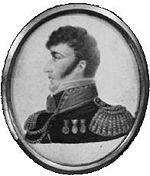 |
Antonio González de Balcarce Antonio González de Balcarce Antonio González de Balcarce was an Argentine military commander in the early 19th century.González de Balcarce was born in Buenos Aires. He joined the armed forces as a cadet in 1788. In the battle for Montevideo in 1807, he was captured by the British forces and taken to England... (1774–1819) |
Interim | ||
| Juan Martín de Pueyrredón Juan Martín de Pueyrredón Juan Martín de Pueyrredón y O'Dogan was an Argentine general and politician of the early 19th century. He was appointed Supreme Director of the United Provinces of the Río de la Plata after the Argentine Declaration of Independence.-Early life:Pueyrredón was born in Buenos Aires, the fifth of... (1776–1850) |
First Argentine Head of State after the Argentine Declaration of Independence Argentine Declaration of Independence What today is commonly referred as the Independence of Argentina was declared on July 9, 1816 by the Congress of Tucumán. In reality, the congressmen that were assembled in Tucumán declared the independence of the United Provinces of South America, which is still today one of the legal names of the... . Supported the Crossing of the Andes Crossing of the Andes The Crossing of the Andes was one of the most important feats in the Argentine and Chilean wars of independence, in which a combined army of Argentine soldiers and Chilean exiles invaded Chile leading to Chile's liberation from Spanish rule... . |
|||
| José Rondeau José Rondeau José Casimiro Rondeau Pereyra was a general and politician in Argentina and Uruguay in the early 19th century.-Biography:... (1773–1844) |
Decisively defeated at the Battle of Cepeda Battle of Cepeda (1820) The Battle of Cepeda of 1820 took place on February 1 in Cañada de Cepeda, Santa Fe, Argentina.It was the first major battle that saw Unitarians and Federals as two constituted sides. Federal League Provinces of Santa Fe and Entre Ríos joined forces to topple the 1819 centralist Constitution, and... by Federalist forces opposed to the 1819 centralist Constitution. |
|||
 |
Juan Pedro Aguirre (1781–1837) |
Interim. Dissolved the National Congress and endorsed the Buenos Aires Cabildo to chose a Governor for Buenos Aires Province. |
Between 1820 and 1826, the Argentine Confederation functioned as a loose alliance of autonomous provinces, put together by pacts and treaties, but lacking an effective central government.
First presidential government
| # | Portrait | Name (Birth–Death) |
Term of office — Political party |
Notes |
Refs | |
|---|---|---|---|---|---|---|
| 1 | Bernardino Rivadavia Bernardino Rivadavia Bernardino de la Trinidad Gónzalez Rivadavia y Rivadavia was the first president of Argentina, from February 8, 1826 to July 7, 1827 . He was a politician of the United Provinces of Río de la Plata, Argentina today... (1780–1845) |
8 February 1826 | 7 July 1827 | Elected by the Constituent Assembly of 1826, before the promulgation of the 1826 constitution. He waged the Argentina-Brazil War Argentina-Brazil War The Cisplatine War or the Argentine–Brazilian War was an armed conflict over an area known as Banda Oriental or "Eastern Shore" in the 1820s between the United Provinces of River Plate and the Empire of Brazil in the aftermath of the United Provinces' emancipation from Spain.-Background:Led by... . The constitution was rejected outside Buenos Aires, and the outcome of the war generated popular discontent. Rivadavia resigned as a result. |
||
| Unitarian Unitarian Party Unitarianists or Unitarians were the proponents of the concept of a Unitary state in Buenos Aires during the civil wars which shortly followed the Declaration of Independence of Argentina in 1816. They were opposed to the Argentine Federalists, who wanted a federation of independent provinces... |
||||||
| 2 | Vicente López y Planes Vicente López y Planes Alejandro Vicente López y Planes was an Argentine writer and politician who acted as interim President of Argentina from July 7, 1827 to August 18, 1827... (1785–1856) |
7 July 1827 | 18 August 1827 | Elected as interim president by the Constituent Assembly of 1826. His mandate was limited to close the Assembly and call for elections for a new governor of Buenos Aires. | ||
| Conciliator | ||||||
Governors of Buenos Aires managing international relations
| Portrait | Name (Birth–Death) |
Term of office — Political party |
Notes |
Refs | |
|---|---|---|---|---|---|
| Manuel Dorrego Manuel Dorrego Manuel Dorrego was an Argentine statesman and soldier. He was governor of Buenos Aires in 1820, and then again from 1827 to 1828.... (1787–1828) |
18 August 1827 | 13 December 1828 | Ended the Argentina-Brazil War. Executed by Juan Lavalle Juan Lavalle Juan Galo de Lavalle was an Argentine military and political figure.-Biography:Lavalle was born in Buenos Aires to María Mercedes González Bordallo and Manuel José de La Vallée y Cortés, general accountant of rents and tobacco for the Viceroyalty of the Río de la Plata.In 1799, the family moved to... . |
||
| Federal Federales (Argentina) Federales was the name under which the supporters of federalism in Argentina were known, opposing the Unitarios that claimed a centralised government of Buenos Aires Province, with no participation of the other provinces of the custom taxes benefits of the Buenos Aires port... |
|||||
| Juan Lavalle Juan Lavalle Juan Galo de Lavalle was an Argentine military and political figure.-Biography:Lavalle was born in Buenos Aires to María Mercedes González Bordallo and Manuel José de La Vallée y Cortés, general accountant of rents and tobacco for the Viceroyalty of the Río de la Plata.In 1799, the family moved to... (1797–1841) |
13 December 1828 | 26 August 1829 | End: Forced by Juan Manuel de Rosas Juan Manuel de Rosas Juan Manuel de Rosas , was an argentine militar and politician, who was elected governor of the province of Buenos Aires in 1829 to 1835, and then of the Argentine Confederation from 1835 until 1852... to resign with the Cañuelas Pact Cañuelas Pact The Cañuelas Pact was an agreement signed on 24 June 1829 between generals Juan Lavalle and Juan Manuel de Rosas, with the aim of ending the civil war in Buenos Aires Province, Argentina, which was going on since the revolution of December of 1828.... . |
||
| Unitarian Unitarian Party Unitarianists or Unitarians were the proponents of the concept of a Unitary state in Buenos Aires during the civil wars which shortly followed the Declaration of Independence of Argentina in 1816. They were opposed to the Argentine Federalists, who wanted a federation of independent provinces... |
|||||
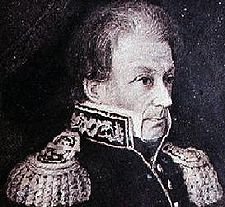 |
Juan José Viamonte Juan José Viamonte Juan José Viamonte González was an Argentine general in the early 19th century.-Biography:Viamonte was born in Buenos Aires and entered the army in his youth following in his father's footsteps... (1774–1843) |
26 August 1829 | 5 December 1829 | Interim. | |
| Federal Federales (Argentina) Federales was the name under which the supporters of federalism in Argentina were known, opposing the Unitarios that claimed a centralised government of Buenos Aires Province, with no participation of the other provinces of the custom taxes benefits of the Buenos Aires port... |
|||||
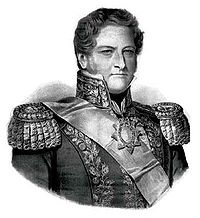 |
Juan Manuel de Rosas Juan Manuel de Rosas Juan Manuel de Rosas , was an argentine militar and politician, who was elected governor of the province of Buenos Aires in 1829 to 1835, and then of the Argentine Confederation from 1835 until 1852... (1793–1877) |
5 December 1829 | 17 December 1832 | First term. Created the Federal Pact Pacto Federal The Federal Pact was a treaty first signed by the Argentine provinces of Buenos Aires, Entre Ríos and Santa Fe on 4 January 1831, for which a Federal military alliance was created to confront the Unitarian Liga Unitaria... , and waged war against the Unitarian League Unitarian League The Unitarian League was a league of provinces of Argentina led by José María Paz, established in 1830, aiming to unite the country under unitarian principles. It was composed by the provinces of San Luis, La Rioja, Catamarca, Mendoza, San Juan, Tucumán, Córdoba, Salta and Santiago del Estero. It... . Resigned. |
|
| Federal Federales (Argentina) Federales was the name under which the supporters of federalism in Argentina were known, opposing the Unitarios that claimed a centralised government of Buenos Aires Province, with no participation of the other provinces of the custom taxes benefits of the Buenos Aires port... |
|||||
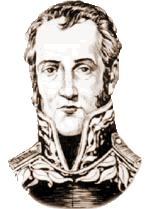 |
Juan Ramón Balcarce Juan Ramón Balcarce Juan Ramón González de Balcarce was an Argentine military leader and politician.Juan was the older brother of Antonio González de Balcarce and of Marcos González de Balcarce. He fought against the British in 1807, and in the 1812 military campaign in Peru under General Manuel Belgrano. He was... (1773–1836) |
17 December 1832 | 5 November 1833 | End: Ousted by the Revolution of the Restorers Revolution of the Restorers The Revolution of the Restorers was a rebellion that took place in Buenos Aires in 1833. The governor Juan Ramón Balcarce was ousted from office and replaced by Juan José Viamonte. The rebellion was motivated by actions taken by Balcarce against former governor Juan Manuel de Rosas... . |
|
| Federal Federales (Argentina) Federales was the name under which the supporters of federalism in Argentina were known, opposing the Unitarios that claimed a centralised government of Buenos Aires Province, with no participation of the other provinces of the custom taxes benefits of the Buenos Aires port... |
|||||
 |
Juan José Viamonte Juan José Viamonte Juan José Viamonte González was an Argentine general in the early 19th century.-Biography:Viamonte was born in Buenos Aires and entered the army in his youth following in his father's footsteps... (1774–1843) |
5 November 1833 | 1 October 1834 | Interim. | |
| Federal Federales (Argentina) Federales was the name under which the supporters of federalism in Argentina were known, opposing the Unitarios that claimed a centralised government of Buenos Aires Province, with no participation of the other provinces of the custom taxes benefits of the Buenos Aires port... |
|||||
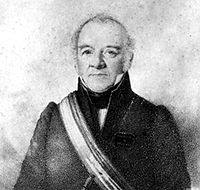 |
Manuel Vicente Maza Manuel Vicente Maza Manuel Vicente Maza was an Argentine lawyer and federal politician. He was governor of Buenos Aires, and was killed after the discovery of a failed plot to kill Juan Manuel de Rosas.-Biography:... (1779–1839) |
1 October 1834 | 7 March 1835 | Interim. | |
| Federal Federales (Argentina) Federales was the name under which the supporters of federalism in Argentina were known, opposing the Unitarios that claimed a centralised government of Buenos Aires Province, with no participation of the other provinces of the custom taxes benefits of the Buenos Aires port... |
|||||
 |
Juan Manuel de Rosas Juan Manuel de Rosas Juan Manuel de Rosas , was an argentine militar and politician, who was elected governor of the province of Buenos Aires in 1829 to 1835, and then of the Argentine Confederation from 1835 until 1852... (1793–1877) |
7 March 1835 | 3 February 1852 | Governor with the sum of public power Sum of public power The sum of public power is a legal figure from Argentina, included in its constitution. It represents the sum of the three powers, and deems the complete delegation of them into the executive power as a crime of high treason.... . Waged the Argentine Argentine Civil War The Argentine Civil Wars were a series of internecine wars that took place in Argentina from 1814 to 1876. These conflicts were separate from the Argentine War of Independence , though they first arose during this period.... and Uruguayan Civil War Uruguayan Civil War The Uruguayan Civil War, also known as "Guerra Grande", was a series of armed conflicts that took place between the Colorado Party and the National Party in Uruguay from 1839 to 1851... s, the War of the Confederation War of the Confederation The War of the Confederation , was a conflict between the Peru-Bolivian Confederation on one side and Chile, Peruvian dissidents and Argentina, on the other, fought mostly in the actual territory of Peru and which ended with a Confederate defeat and the dissolution of the... and the French French blockade of the Río de la Plata The French blockade to the Río de la Plata was a two-year long naval blockade imposed by France on the Argentine Confederation ruled by Juan Manuel de Rosas. It closed Buenos Aires to naval commerce. It was imposed in 1838 to support the Peru–Bolivian Confederation in the War of the Confederation,... and Anglo-French blockade of the Río de la Plata Anglo-French blockade of the Río de la Plata The Anglo-French blockade of the Río de la Plata was a five-year long naval blockade imposed by France and Britain on the Argentine Confederation ruled by Juan Manuel de Rosas. It was imposed in 1845 to support the Colorado Party in the Uruguayan Civil War and closed Buenos Aires to naval commerce... . Designated "Supreme Chief of the Argentine Confederation" in 1851. Defeated by Justo José de Urquiza Justo José de Urquiza Justo José de Urquiza y García was an Argentine general and politician. He was president of the Argentine Confederation from 1854 to 1860.He was governor of Entre Ríos during the government of Juan Manuel de Rosas, governor of Buenos Aires with powers delegated from the other provinces... at the Battle of Caseros Battle of Caseros The Battle of Caseros was fought near the town of Caseros, more precisely between the present-day train stations of Caseros and Palomar in Buenos Aires Province, Argentina, on 3 February 1852, between the Army of Buenos Aires commanded by Juan Manuel de Rosas... . |
|
| Federal Federales (Argentina) Federales was the name under which the supporters of federalism in Argentina were known, opposing the Unitarios that claimed a centralised government of Buenos Aires Province, with no participation of the other provinces of the custom taxes benefits of the Buenos Aires port... |
|||||
| Justo José de Urquiza Justo José de Urquiza Justo José de Urquiza y García was an Argentine general and politician. He was president of the Argentine Confederation from 1854 to 1860.He was governor of Entre Ríos during the government of Juan Manuel de Rosas, governor of Buenos Aires with powers delegated from the other provinces... (1801–1870) |
3 February 1852 | 5 March 1854 | Governor of Entre Ríos Province. Governed as "Provisional Director of the Argentine Confederation", from which Buenos Aires Province seceded on 11 September 1852. | ||
| Federal Federales (Argentina) Federales was the name under which the supporters of federalism in Argentina were known, opposing the Unitarios that claimed a centralised government of Buenos Aires Province, with no participation of the other provinces of the custom taxes benefits of the Buenos Aires port... |
|||||
Presidents
| # | Portrait | Name (Birth–Death) |
Term of office — Political party |
Notes |
Refs | |
|---|---|---|---|---|---|---|
| 3 | Justo José de Urquiza Justo José de Urquiza Justo José de Urquiza y García was an Argentine general and politician. He was president of the Argentine Confederation from 1854 to 1860.He was governor of Entre Ríos during the government of Juan Manuel de Rosas, governor of Buenos Aires with powers delegated from the other provinces... (1801–1870) |
5 March 1854 | 5 March 1860 | Elected by the electoral college. President of the Argentine Confederation Argentine Confederation The Argentine Confederation is one of the official names of Argentina, according to the Argentine Constitution, Article 35... . The reincoporation of Buenos Aires Province was negotiated after the 1859 Battle of Cepeda Battle of Cepeda (1859) The Battle of Cepeda of 1859 took place on October 23 at Cañada de Cepeda, Santa Fe, Argentina. The Republic of the Argentine Confederation army, led by Federal Justo José de Urquiza defeated the Province of Buenos Aires forces, led by Unitarian Bartolomé Mitre.-The battle in context:Before the... . |
||
| Federal Federales (Argentina) Federales was the name under which the supporters of federalism in Argentina were known, opposing the Unitarios that claimed a centralised government of Buenos Aires Province, with no participation of the other provinces of the custom taxes benefits of the Buenos Aires port... |
||||||
| 4 | Santiago Derqui Santiago Derqui Santiago Rafael Luis Manuel José María Derqui Rodríguez was president of Argentina from March 5, 1860 to November 5, 1861. He was featured on the 10 Australes note, which is now obsolete.... (1809–1867) |
5 March 1860 | 4 November 1861 | Indirect elections. On October 18, 1860, a Constitutional reform is adopted, proclaiming the Argentine Republic. Resigned after the national government lost the Battle of Pavón Battle of Pavón The Battle of Pavón was a key battle of the Argentine civil wars fought in Pavón, in Santa Fé Province, Argentina, on September 17, 1861, between the Army of Buenos Aires, commanded by Bartolomé Mitre, and the National Army, commanded by Justo José de Urquiza... to Buenos Aires Province. |
||
| Federal Federales (Argentina) Federales was the name under which the supporters of federalism in Argentina were known, opposing the Unitarios that claimed a centralised government of Buenos Aires Province, with no participation of the other provinces of the custom taxes benefits of the Buenos Aires port... |
||||||
| 5 | 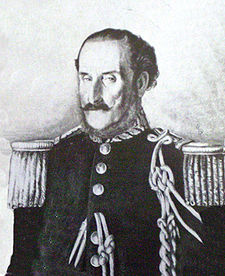 |
Juan Esteban Pedernera Juan Esteban Pedernera Juan Esteban Pedernera was interim President of Argentina during a brief period in 1861.Born in 1796 in San Luis Province, he studied in a Franciscan monastery when young, and left his studies to join the Regiment of Mounted Grenadiers being summoned by José de San Martín to fight in the War of... (1796–1886) |
4 November 1861 | 12 December 1861 | Vice-president under Derqui Santiago Derqui Santiago Rafael Luis Manuel José María Derqui Rodríguez was president of Argentina from March 5, 1860 to November 5, 1861. He was featured on the 10 Australes note, which is now obsolete.... , assumed the presidency after his resignation. Resigned on the dissolution of the national government. |
|
| 6 | 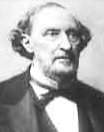 |
Bartolomé Mitre Bartolomé Mitre Bartolomé Mitre Martínez was an Argentine statesman, military figure, and author. He was the President of Argentina from 1862 to 1868.-Life and times:... (1821–1906) |
12 December 1861 | 12 October 1862 | Governor of Buenos Aires Province. Acting President, confirmed by the national Congress on May 1862 | |
| 12 October 1862 | 12 October 1868 | Indirect elections. First president of the unified country. Waged the War of the Triple Alliance War of the Triple Alliance The Paraguayan War , also known as War of the Triple Alliance , was a military conflict in South America fought from 1864 to 1870 between Paraguay and the Triple Alliance of Argentina, Brazil, and Uruguay... . |
||||
| Liberal | ||||||
| 7 | Domingo Faustino Sarmiento Domingo Faustino Sarmiento Domingo Faustino Sarmiento was an Argentine activist, intellectual, writer, statesman and the seventh President of Argentina. His writing spanned a wide range of genres and topics, from journalism to autobiography, to political philosophy and history... (1811–1888) |
12 October 1868 | 12 October 1874 | Indirect elections. Ended the War of the Triple Alliance. | ||
| Liberal | ||||||
| 8 | Nicolás Avellaneda Nicolás Avellaneda Nicolás Remigio Aurelio Avellaneda Silva was an Argentine politician and journalist, and president of Argentina from 1874 to 1880. Avellaneda's main projects while in office were banking and education reform, leading to Argentina's economic growth... (1837–1885) |
12 October 1874 | 12 October 1880 | Indirect elections. Federalization of Buenos Aires City in September 1880. | ||
| PN | ||||||
| 9 | Julio Argentino Roca Julio Argentino Roca Alejo Julio Argentino Roca Paz was an army general who served as President of Argentina from 12 October 1880 to 12 October 1886 and again from 12 October 1898 to 12 October 1904.-Upbringing and early career:... (1843–1914) |
12 October 1880 | 12 October 1886 | Indirect elections. First term. | ||
| PAN National Autonomist Party The National Autonomist Party was an Argentine political party during the 1874-1916 period. Created on March 15, 1874 by the union of the Autonomist Party of Adolfo Alsina and the National Party of Nicolás Avellaneda... |
||||||
| 10 | 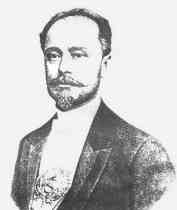 |
Miguel Juárez Celman (1844–1909) |
12 October 1886 | 6 August 1890 | Indirect elections. Resigned following the Revolution of the Park Revolution of the Park The Revolution of the Park was an uprising against the national government of Argentina that took place on 26 July 1890 and started with the takeover of the Buenos Aires Artillery Park. It was led by members of the Civic Union against the presidency of Miguel Juárez Celman... . |
|
| PAN National Autonomist Party The National Autonomist Party was an Argentine political party during the 1874-1916 period. Created on March 15, 1874 by the union of the Autonomist Party of Adolfo Alsina and the National Party of Nicolás Avellaneda... – PN |
||||||
| 11 |  |
Carlos Pellegrini Carlos Pellegrini Carlos Enrique José Pellegrini Bevans was President of Argentina from 6 August 1890 to 12 October 1892.... (1846–1906) |
6 August 1890 | 12 October 1892 | Vice-president under Juárez Celman, assumed the presidency after his resignation. | |
| PAN National Autonomist Party The National Autonomist Party was an Argentine political party during the 1874-1916 period. Created on March 15, 1874 by the union of the Autonomist Party of Adolfo Alsina and the National Party of Nicolás Avellaneda... |
||||||
| 12 | Luis Sáenz Peña Luis Sáenz Peña Luis Sáenz Peña was a lawyer and President of Argentina.He graduated in law from the University of Buenos Aires, and participated in the constitutional assembly of 1860. He was a number of times a national deputy and senator. In 1882 he occupied a seat on the Supreme Court of the Province of... (1822–1907) |
12 October 1892 | 22 January 1895 | Indirect elections. Resigned. | ||
| PAN National Autonomist Party The National Autonomist Party was an Argentine political party during the 1874-1916 period. Created on March 15, 1874 by the union of the Autonomist Party of Adolfo Alsina and the National Party of Nicolás Avellaneda... |
||||||
| 13 | José Evaristo Uriburu José Evaristo Uriburu José Evaristo de Uriburu y Álvarez de Arenales was President of Argentina from 23 January 1895 to 12 October 1898.... (1831–1914) |
22 January 1895 | 12 October 1898 | Vice-president under Sáenz Peña Luis Sáenz Peña Luis Sáenz Peña was a lawyer and President of Argentina.He graduated in law from the University of Buenos Aires, and participated in the constitutional assembly of 1860. He was a number of times a national deputy and senator. In 1882 he occupied a seat on the Supreme Court of the Province of... , assumed the presidency after his resignation. |
||
| PAN National Autonomist Party The National Autonomist Party was an Argentine political party during the 1874-1916 period. Created on March 15, 1874 by the union of the Autonomist Party of Adolfo Alsina and the National Party of Nicolás Avellaneda... |
||||||
| 14 | Julio Argentino Roca Julio Argentino Roca Alejo Julio Argentino Roca Paz was an army general who served as President of Argentina from 12 October 1880 to 12 October 1886 and again from 12 October 1898 to 12 October 1904.-Upbringing and early career:... (1843–1914) |
12 October 1898 | 12 October 1904 | Indirect elections. Second term. | ||
| PAN National Autonomist Party The National Autonomist Party was an Argentine political party during the 1874-1916 period. Created on March 15, 1874 by the union of the Autonomist Party of Adolfo Alsina and the National Party of Nicolás Avellaneda... |
||||||
| 15 | Manuel Quintana Manuel Quintana Manuel Pedro Quintana y Sáenz de Gaona was the President of Argentina from 12 October 1904 to 12 March 1906. He died in office.... (1835–1906) |
12 October 1904 | 25 January 1906 | Indirect elections. Resigned for health reasons, died two months later. | ||
| PAN National Autonomist Party The National Autonomist Party was an Argentine political party during the 1874-1916 period. Created on March 15, 1874 by the union of the Autonomist Party of Adolfo Alsina and the National Party of Nicolás Avellaneda... |
||||||
| 16 | José Figueroa Alcorta José Figueroa Alcorta José Figueroa Alcorta was President of Argentina from 12 March 1906 to 12 October 1910.Figueroa Alcorta was born in Córdoba as the son of José Figueroa and Teodosia Alcorta. He was elected a National Representative for Córdoba before becoming Provincial Governor in 1895. In 1898 he returned to the... (1860–1931) |
25 January 1906 | 12 October 1910 | Vice-president under Quintana Manuel Quintana Manuel Pedro Quintana y Sáenz de Gaona was the President of Argentina from 12 October 1904 to 12 March 1906. He died in office.... , assumed the presidency after his resignation. |
||
| PAN National Autonomist Party The National Autonomist Party was an Argentine political party during the 1874-1916 period. Created on March 15, 1874 by the union of the Autonomist Party of Adolfo Alsina and the National Party of Nicolás Avellaneda... |
||||||
| 17 | Roque Sáenz Peña Roque Sáenz Peña Roque Sáenz Peña Lahitte was President of Argentina from 12 October 1910 to 9 August 1914, when he died in office... (1851–1914) |
12 October 1910 | 9 August 1914 | Indirect elections. Promoted the Sáenz Peña law Sáenz Peña Law The Sáenz Peña Law was Law 8871 of Argentina, sanctioned by the National Congress on 10 February 1912, which established the universal, secret and mandatory male suffrage though the creation of an electoral list... , which allowed secret Secret ballot The secret ballot is a voting method in which a voter's choices in an election or a referendum are anonymous. The key aim is to ensure the voter records a sincere choice by forestalling attempts to influence the voter by intimidation or bribery. The system is one means of achieving the goal of... , universal Universal suffrage Universal suffrage consists of the extension of the right to vote to adult citizens as a whole, though it may also mean extending said right to minors and non-citizens... and mandatory Compulsory voting Compulsory voting is a system in which electors are obliged to vote in elections or attend a polling place on voting day. If an eligible voter does not attend a polling place, he or she may be subject to punitive measures such as fines, community service, or perhaps imprisonment if fines are unpaid... suffrage. Died in office. |
||
| PAN National Autonomist Party The National Autonomist Party was an Argentine political party during the 1874-1916 period. Created on March 15, 1874 by the union of the Autonomist Party of Adolfo Alsina and the National Party of Nicolás Avellaneda... – Mod |
||||||
| 18 | 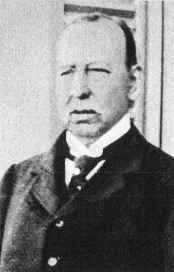 |
Victorino de la Plaza Victorino de la Plaza Victorino de la Plaza y Palacios was President of Argentina from 9 August 1914 to 11 October 1916.Second son of José Roque Mariano de la Plaza Elejalde and Manuela de la Silva Palacios; his older brother, Rafael de la Plaza, was also a politician and acted as governor of Santiago del Estero... (1840–1919) |
9 August 1914 | 12 October 1916 | Vice-president under Sáenz Peña Roque Sáenz Peña Roque Sáenz Peña Lahitte was President of Argentina from 12 October 1910 to 9 August 1914, when he died in office... , assumed the presidency after his death. |
|
| PAN National Autonomist Party The National Autonomist Party was an Argentine political party during the 1874-1916 period. Created on March 15, 1874 by the union of the Autonomist Party of Adolfo Alsina and the National Party of Nicolás Avellaneda... |
||||||
| 19 |  |
Hipólito Yrigoyen Hipólito Yrigoyen Juan Hipólito del Sagrado Corazón de Jesús Irigoyen Alem was twice President of Argentina . His activism became the prime impetus behind the obtainment of universal suffrage in Argentina in 1912... (1852–1933) |
12 October 1916 | 12 October 1922 | Free indirect elections. First president elected under the Sáenz Peña law. First term. Maintained neutrality during World War I World War I World War I , which was predominantly called the World War or the Great War from its occurrence until 1939, and the First World War or World War I thereafter, was a major war centred in Europe that began on 28 July 1914 and lasted until 11 November 1918... . |
|
| UCR Radical Civic Union The Radical Civic Union is a political party in Argentina. The party's positions on issues range from liberal to social democratic. The UCR is a member of the Socialist International. Founded in 1891 by radical liberals, it is the oldest political party active in Argentina... |
||||||
| 20 |  |
Marcelo Torcuato de Alvear Marcelo Torcuato de Alvear Máximo Marcelo Torcuato de Alvear Pacheco , better known as Marcelo T. de Alvear was an Argentine politician and President of Argentina from October 12, 1922 to October 12, 1928.-Biography:... (1868–1942) |
12 October 1922 | 12 October 1928 | Free indirect elections. | |
| UCR Radical Civic Union The Radical Civic Union is a political party in Argentina. The party's positions on issues range from liberal to social democratic. The UCR is a member of the Socialist International. Founded in 1891 by radical liberals, it is the oldest political party active in Argentina... |
||||||
| 21 | 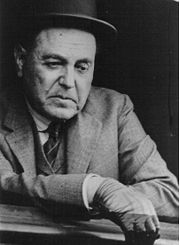 |
Hipólito Yrigoyen Hipólito Yrigoyen Juan Hipólito del Sagrado Corazón de Jesús Irigoyen Alem was twice President of Argentina . His activism became the prime impetus behind the obtainment of universal suffrage in Argentina in 1912... (1852–1933) |
12 October 1928 | 6 September 1930 | Free indirect elections. Second term, ousted from office by a civico-military coup. | |
| UCR Radical Civic Union The Radical Civic Union is a political party in Argentina. The party's positions on issues range from liberal to social democratic. The UCR is a member of the Socialist International. Founded in 1891 by radical liberals, it is the oldest political party active in Argentina... |
||||||
| 22 | José Félix Uriburu José Félix Uriburu General José Félix Benito Uriburu y Uriburu was the first de facto President of Argentina, achieved through a military coup, from September 6, 1930 to February 20, 1932.-Biography:... (1868–1932) |
6 September 1930 | 20 February 1932 | First coup d'etat Coup d'état A coup d'état state, literally: strike/blow of state)—also known as a coup, putsch, and overthrow—is the sudden, extrajudicial deposition of a government, usually by a small group of the existing state establishment—typically the military—to replace the deposed government with another body; either... in modern Argentine history. Beginning of the Infamous Decade Infamous Decade The Infamous Decade in Argentina is the name given to the period of time that started in 1930 with the coup d'état against President Hipólito Yrigoyen by José Félix Uriburu... . |
||
| Military | ||||||
| 23 | 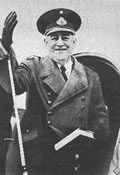 |
Agustín Pedro Justo Agustín Pedro Justo General Agustín Pedro Justo Rolón was President of Argentina from February 20, 1932, to February 20, 1938... (1876–1943) |
20 February 1932 | 20 February 1938 | Indirect elections held with fraud, the UCR Radical Civic Union The Radical Civic Union is a political party in Argentina. The party's positions on issues range from liberal to social democratic. The UCR is a member of the Socialist International. Founded in 1891 by radical liberals, it is the oldest political party active in Argentina... was proscribed. |
|
| Concordancia Concordancia (Argentina) The Concordancia was a political alliance in Argentina. Three Presidents belonging to the Concordance were in power from 1931 to 1943, a period known in Argentina as the "Infamous Decade."... |
||||||
| 24 |  |
Roberto María Ortiz Roberto María Ortiz Jaime Gerardo Roberto Marcelino María Ortiz Lizardi was President of Argentina from February 20, 1938 to June 27, 1942.... (1886–1942) |
20 February 1938 | 27 June 1942 | Indirect elections held with fraud. Died in office. | |
| UCR-A – Concordancia Concordancia (Argentina) The Concordancia was a political alliance in Argentina. Three Presidents belonging to the Concordance were in power from 1931 to 1943, a period known in Argentina as the "Infamous Decade."... |
||||||
| 25 |  |
Ramón Castillo Ramón Castillo Ramón S. Castillo Barrionuevo was a conservative Argentine politician who served as President of Argentina from June 27, 1942 to June 4, 1943... (1873–1944) |
27 June 1942 | 4 June 1943 | Vice-president under Ortiz Roberto María Ortiz Jaime Gerardo Roberto Marcelino María Ortiz Lizardi was President of Argentina from February 20, 1938 to June 27, 1942.... , assumed the presidency after his death. Deposed in a coup d'état. End of the Infamous Decade Infamous Decade The Infamous Decade in Argentina is the name given to the period of time that started in 1930 with the coup d'état against President Hipólito Yrigoyen by José Félix Uriburu... . |
|
| PDN National Democratic Party (Argentina) The National Democratic Party, or Partido Demócrata Nacional was an Argentine conservative party created in 1931 which disappeared after 1955. It was generally known simply as the Conservative Party, or Partido Conservador... – Concordancia Concordancia (Argentina) The Concordancia was a political alliance in Argentina. Three Presidents belonging to the Concordance were in power from 1931 to 1943, a period known in Argentina as the "Infamous Decade."... |
||||||
| 26 | Arturo Rawson Arturo Rawson Arturo Rawson was the President of Argentina from June 4, 1943 to June 7, 1943.-Biography:Born in Santiago del Estero, Rawson attended Argentina’s Military College, which he graduated from in 1907 and subsequently taught at for a time. Rawson rose through the ranks of the Argentine Army and was... (1885–1952) |
4 June 1943 | 7 June 1943 | Coup d'etat. Beginning of the Revolution of '43 Revolution of '43 The 1943 Argentine coup d'état was a Coup d'état on June 4, 1943 which ended the government of Ramón Castillo, who had been fraudulently elected to office, as part of the period known as the Infamous Decade... . Ousted from office. |
||
| Military | ||||||
| 27 | 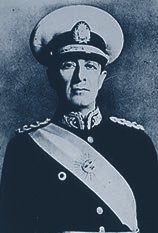 |
Pedro Pablo Ramírez Pedro Pablo Ramírez General Pedro Pablo Ramírez was de facto President of Argentina from June 7, 1943 to February 24, 1944. He was the founder and leader of the Guardia Nacional, Argentina's Fascist militia.... (1884–1962) |
7 June 1943 | 9 March 1944 | Coup d'etat. Ousted from office. | |
| Military | ||||||
| 28 | Edelmiro Julián Farrell Edelmiro Julián Farrell General Edelmiro Julián Farrell Plaul was an Argentine military officer of Irish descent. He was the de facto president of Argentina between 1944 and 1946.... (1887–1980) |
11 March 1944 | 4 June 1946 | Coup d'etat. Declared war Allies of World War II The Allies of World War II were the countries that opposed the Axis powers during the Second World War . Former Axis states contributing to the Allied victory are not considered Allied states... to the Axis powers Axis Powers The Axis powers , also known as the Axis alliance, Axis nations, Axis countries, or just the Axis, was an alignment of great powers during the mid-20th century that fought World War II against the Allies. It began in 1936 with treaties of friendship between Germany and Italy and between Germany and... . Called elections. End of the Revolution of '43 Revolution of '43 The 1943 Argentine coup d'état was a Coup d'état on June 4, 1943 which ended the government of Ramón Castillo, who had been fraudulently elected to office, as part of the period known as the Infamous Decade... . |
||
| Military | ||||||
| 29 |  |
Juan Domingo Perón (1895–1974) |
4 June 1946 | 4 June 1952 | Free indirect elections. First term. Reelection enabled by the Constitution of 1949. | |
| Labour Labour Party (Argentina) The Labour Party was a political party in Argentina. The party was founded by Peronist trade union leaders at the end of October 1945. The party organization was built up around the Peronist unions, and most of its representatives in different elected offices had been recruited from the ranks of... |
||||||
| 4 June 1952 | 20 September 1955 | Free direct elections. Second term. First election to allow women's suffrage. Victory with 62,49% of votes, highest victory in Argentine elections. Ousted from office. | ||||
| PJ Justicialist Party The Justicialist Party , or PJ, is a Peronist political party in Argentina, and the largest component of the Peronist movement.The party was led by Néstor Kirchner, President of Argentina from 2003 to 2007, until his death on October 27, 2010. The current Argentine president, Cristina Fernández de... |
||||||
| 30 | 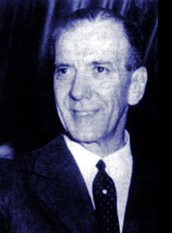 |
Eduardo Lonardi Eduardo Lonardi Eduardo A. Lonardi Doucet served as de facto president of Argentina from September 23, 1955 until November 13, 1955.-Biography:He was born on September 15, 1896.... (1896–1956) |
23 September 1955 | 13 November 1955 | Coup d'etat. Beginning of the Revolución Libertadora Revolución Libertadora The Revolución Libertadora was a military uprising that ended the second presidential term of Juan Perón in Argentina, on September 16, 1955.-History:... . The 1853 Constitution is restored and the 1949 Constitution is repealed. Ousted from office. |
|
| Military | ||||||
| 31 |  |
Pedro Eugenio Aramburu Pedro Eugenio Aramburu Pedro Eugenio Aramburu Silveti was an Argentine Army General. Born in Río Cuarto, Córdoba on May 21, 1903. He was a major figure behind the military coup against Juan Perón in 1955. He became de facto president of Argentina from November 13, 1955 to May 1, 1958... (1903–1970) |
13 November 1955 | 1 May 1958 | Coup d'etat. Call for elections with Peronism Peronism Peronism , or Justicialism , is an Argentine political movement based on the programmes associated with former President Juan Perón and his second wife, Eva Perón... proscribed. End of the Revolución Libertadora Revolución Libertadora The Revolución Libertadora was a military uprising that ended the second presidential term of Juan Perón in Argentina, on September 16, 1955.-History:... . |
|
| Military | ||||||
| 32 | Arturo Frondizi Arturo Frondizi Arturo Frondizi Ercoli was the President of Argentina between May 1, 1958, and March 29, 1962, for the Intransigent Radical Civic Union.-Early life:Frondizi was born in Paso de los Libres, Corrientes Province... (1908–1995) |
1 May 1958 | 29 March 1962 | Indirect elections with Peronism Peronism Peronism , or Justicialism , is an Argentine political movement based on the programmes associated with former President Juan Perón and his second wife, Eva Perón... proscribed. Ousted from office by a military coup. |
||
| UCRI Intransigent Radical Civic Union The Intransigent Radical Civic Union or UCRI is a defunct political party of Argentina.The UCRI developed from the centrist Radical Civic Union in 1956, following a split at the party's convention in Tucumán... |
||||||
| 33 | José María Guido José María Guido José María Guido was an interim President of Argentina from 30 March 1962 to 12 October 1963.Guido was elected to the Argentine Senate for Río Negro Province in 1958, representing the Intransigent Radical Civic Union... (1910–1975) |
29 March 1962 | 12 October 1963 | Provisional President of the Senate Argentine Senate The Argentine Senate is the upper house of the Argentine National Congress. It has 72 senators: three for each province and three for the Autonomous City of Buenos Aires... , acting as president since the removal of Frondizi, as the civil procedures to replace the deposed president were followed and Vice-President Alejandro Gómez had renounced in 1958. |
||
| UCRI Intransigent Radical Civic Union The Intransigent Radical Civic Union or UCRI is a defunct political party of Argentina.The UCRI developed from the centrist Radical Civic Union in 1956, following a split at the party's convention in Tucumán... |
||||||
| 34 | Arturo Umberto Illia Arturo Umberto Illia Arturo Umberto Illia was President of Argentina from October 12, 1963, to June 28, 1966, and a member of the centrist UCR.-Biography:Arturo Umberto Illia was born August 4, 1900 in Pergamino, Buenos Aires Province, to Emma Francesconi and Martín Illia, Italian Argentine immigrants from the... (1900–1983) |
12 October 1963 | 28 June 1966 | Indirect elections with Peronism Peronism Peronism , or Justicialism , is an Argentine political movement based on the programmes associated with former President Juan Perón and his second wife, Eva Perón... proscribed. Ousted from office by a military coup. |
||
| UCRP | ||||||
| 35 | Juan Carlos Onganía Juan Carlos Onganía Juan Carlos Onganía Carballo was de facto president of Argentina from 29 June 1966 to 8 June 1970. He rose to power as military dictator after toppling, in a coup d’état self-named Revolución Argentina , the democratically elected president Arturo Illia .-Economic and social... (1914–1995) |
29 June 1966 | 8 June 1970 | Coup d'etat. First ruler of the Revolución Argentina. Ousted from office. | ||
| Military | ||||||
| 36 | Roberto M. Levingston Roberto M. Levingston Roberto Marcelo Levingston Laborda was a general in theArgentine Army and president of Argentina from June 18, 1970 to March 22, 1971, during the Revolución Argentina period in Argentine history... (born 1920) |
8 June 1970 | 23 May 1971 | Coup d'etat. De facto De facto De facto is a Latin expression that means "concerning fact." In law, it often means "in practice but not necessarily ordained by law" or "in practice or actuality, but not officially established." It is commonly used in contrast to de jure when referring to matters of law, governance, or... , ousted from office. |
||
| Military | ||||||
| 37 |  |
Alejandro A. Lanusse (1918–1996) |
26 May 1971 | 25 May 1973 | Coup d'etat. Last ruler of the Revolución Argentina. Called for elections. Peronism Peronism Peronism , or Justicialism , is an Argentine political movement based on the programmes associated with former President Juan Perón and his second wife, Eva Perón... proscription lifted. |
|
| Military | ||||||
| 38 | 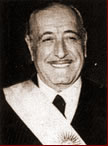 |
Héctor José Cámpora Héctor José Cámpora Héctor José Cámpora Demaestre was president of Argentina from 25 May until 13 July 1973.Cámpora, affectionately known as el Tío , was born in the city of Mercedes, in the Province of Buenos Aires... (1909–1980) |
25 May 1973 | 13 July 1973 | Free direct elections. First Peronist Peronism Peronism , or Justicialism , is an Argentine political movement based on the programmes associated with former President Juan Perón and his second wife, Eva Perón... president after the proscription. Cámpora annulled the proscription that remained specifically over Juan Domingo Perón, and resigned. His Vice-president, Vicente Solano Lima, resigned with him. |
|
| FJL | ||||||
| 39 | 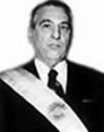 |
Raúl Alberto Lastiri Raúl Alberto Lastiri Raúl Alberto Lastiri was an Argentine politician who was interim president of Argentina from July 13, 1973 until October 12, 1973. Lastiri, who presided over the Argentine Chamber of Deputies, was promoted to the presidency of the country after Héctor Cámpora and Vicente Solano Lima resigned... (1915–1978) |
13 July 1973 | 12 October 1973 | Interim. President of the Chamber of Deputees, assumed the presidency after Cámpora's and Solano Lima's resignations. Alejandro Díaz Bialet, President of the Chamber of Senators and ahead of Lastiri Raúl Alberto Lastiri Raúl Alberto Lastiri was an Argentine politician who was interim president of Argentina from July 13, 1973 until October 12, 1973. Lastiri, who presided over the Argentine Chamber of Deputies, was promoted to the presidency of the country after Héctor Cámpora and Vicente Solano Lima resigned... in the succession line, was on a diplomatic mission in Africa at that time. |
|
| FJL | ||||||
| 40 | 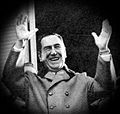 |
Juan Domingo Perón (1895–1974) |
12 October 1973 | 30 June 1974 | Free direct elections. Third term. Died in office. | |
| FJL – PJ Justicialist Party The Justicialist Party , or PJ, is a Peronist political party in Argentina, and the largest component of the Peronist movement.The party was led by Néstor Kirchner, President of Argentina from 2003 to 2007, until his death on October 27, 2010. The current Argentine president, Cristina Fernández de... |
||||||
| 41 | 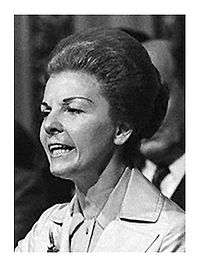 |
Isabel Martínez de Perón Isabel Martínez de Perón María Estela Martínez Cartas de Perón , better known as Isabel Martínez de Perón or Isabel Perón, is a former President of Argentina. She was also the third wife of another former President, Juan Perón... (born 1931) |
30 June 1974 | 24 March 1976 | Vice-president of Juan Perón Juan Perón Juan Domingo Perón was an Argentine military officer, and politician. Perón was three times elected as President of Argentina though he only managed to serve one full term, after serving in several government positions, including the Secretary of Labor and the Vice Presidency... , assumed the presidency after his death. First female president in the Americas Americas The Americas, or America , are lands in the Western hemisphere, also known as the New World. In English, the plural form the Americas is often used to refer to the landmasses of North America and South America with their associated islands and regions, while the singular form America is primarily... . Ousted from office by a military coup. Ítalo Argentino Lúder Ítalo Argentino Lúder Ítalo Argentino Lúder was an Argentinian politician who served as the acting President of Argentina from September 13, 1975 until October 16, 1975, for Isabel Perón.... served as acting President from September 13, 1975 until October 16, 1975. |
|
| FJL – PJ Justicialist Party The Justicialist Party , or PJ, is a Peronist political party in Argentina, and the largest component of the Peronist movement.The party was led by Néstor Kirchner, President of Argentina from 2003 to 2007, until his death on October 27, 2010. The current Argentine president, Cristina Fernández de... |
||||||
| 42 | 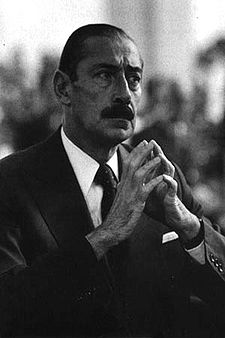 |
Jorge Rafael Videla Jorge Rafael Videla Jorge Rafael Videla Redondo is a former senior commander in the Argentine Army who was the de facto President of Argentina from 1976 to 1981. He came to power in a coup d'état that deposed Isabel Martínez de Perón... (born 1925) |
29 March 1976 | 29 March 1981 | Coup d'etat. President of the Military Junta. First ruler of the National Reorganization Process National Reorganization Process The National Reorganization Process was the name used by its leaders for the military government that ruled Argentina from 1976 to 1983. In Argentina it is often known simply as la última junta militar or la última dictadura , because several of them existed throughout its history.The Argentine... . Longest government of a de facto De facto De facto is a Latin expression that means "concerning fact." In law, it often means "in practice but not necessarily ordained by law" or "in practice or actuality, but not officially established." It is commonly used in contrast to de jure when referring to matters of law, governance, or... ruler. |
|
| Military | ||||||
| 43 | Roberto Eduardo Viola Roberto Eduardo Viola Roberto Eduardo Viola Redondo was an Argentine military officer who briefly served as president of Argentina from March 29 to December 11, 1981 during a period of military rule.-President of Argentina:... (1924–1994) |
29 March 1981 | 12 December 1981 | Coup d'etat. President of the Military Junta. Ousted from office. | ||
| Military | ||||||
| 44 |  |
Leopoldo Galtieri Leopoldo Galtieri Leopoldo Fortunato Galtieri Castelli was an Argentine general and President of Argentina from December 22, 1981 to June 18, 1982, during the last military dictatorship . The death squad Intelligence Battalion 601 directly reported to him... (1926–2003) |
22 December 1981 | 17 June 1982 | Coup d'etat. President of the Military Junta. Waged the Falklands War Falklands War The Falklands War , also called the Falklands Conflict or Falklands Crisis, was fought in 1982 between Argentina and the United Kingdom over the disputed Falkland Islands and South Georgia and the South Sandwich Islands... . Ousted from office. |
|
| Military | ||||||
| 45 |  |
Reynaldo Bignone Reynaldo Bignone Reynaldo Benito Antonio Bignone is an Argentine general who served as dictatorial President of Argentina from July 1, 1982 to December 10, 1983. In 2010, he was sentenced to 25 years in prison for his role in the kidnappings, torture, and murders of the Dirty War.-Early career:Reynaldo Benito... (born 1928) |
1 July 1982 | 10 December 1983 | Coup d'etat. Last ruler of the National Reorganization Process National Reorganization Process The National Reorganization Process was the name used by its leaders for the military government that ruled Argentina from 1976 to 1983. In Argentina it is often known simply as la última junta militar or la última dictadura , because several of them existed throughout its history.The Argentine... . Called for elections. |
|
| Military | ||||||
| 46 | 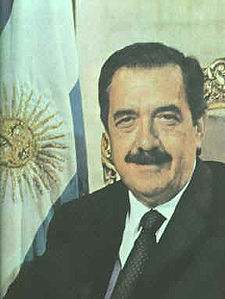 |
Raúl Alfonsín Raúl Alfonsín Raúl Ricardo Alfonsín was an Argentine lawyer, politician and statesman, who served as the President of Argentina from December 10, 1983, to July 8, 1989. Alfonsín was the first democratically-elected president of Argentina following the military government known as the National Reorganization... (1927–2009) |
10 December 1983 | 8 July 1989 | Free indirect elections. The 1989 presidential elections Argentine general election, 1989 The Argentine general election of 1989 was held on 14 May. Voters chose both the President and their legislators and with a turnout of 85.3%, it produced the following results:-President:aAbstentions.-Argentine Congress:... were anticipated. Alfonsín resigned during the transition and gave power to Carlos Menem Carlos Menem Carlos Saúl Menem is an Argentine politician who was President of Argentina from 1989 to 1999. He is currently an Argentine National Senator for La Rioja Province.-Early life:... six months in advance. |
|
| UCR Radical Civic Union The Radical Civic Union is a political party in Argentina. The party's positions on issues range from liberal to social democratic. The UCR is a member of the Socialist International. Founded in 1891 by radical liberals, it is the oldest political party active in Argentina... |
||||||
| 47 | 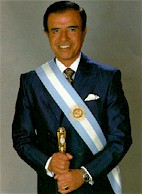 |
Carlos Menem Carlos Menem Carlos Saúl Menem is an Argentine politician who was President of Argentina from 1989 to 1999. He is currently an Argentine National Senator for La Rioja Province.-Early life:... (born 1930) |
8 July 1989 | 8 July 1995 | Free indirect elections. First term. The 1994 amendment of the Argentine Constitution reduced the presidential term to four years and allowed a single consecutive reelection. | |
| 8 July 1995 | 10 December 1999 | Free direct elections. Second term. | ||||
| PJ Justicialist Party The Justicialist Party , or PJ, is a Peronist political party in Argentina, and the largest component of the Peronist movement.The party was led by Néstor Kirchner, President of Argentina from 2003 to 2007, until his death on October 27, 2010. The current Argentine president, Cristina Fernández de... |
||||||
| 48 | 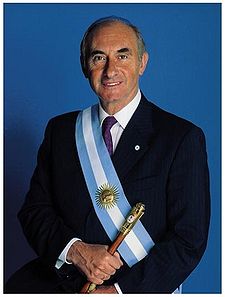 |
Fernando de la Rúa Fernando de la Rúa Fernando de la Rúa is an Argentine politician. He was president of the country from December 10, 1999 to December 21, 2001 for the Alliance for Work, Justice and Education .... (born 1937) |
10 December 1999 | 20 December 2001 | Free direct elections. Faced a strong economic crisis. Resigned after the December 2001 riots. His Vice-president Carlos Álvarez had resigned in October 2000, so the Congress Assembled designated a new President. | |
| UCR Radical Civic Union The Radical Civic Union is a political party in Argentina. The party's positions on issues range from liberal to social democratic. The UCR is a member of the Socialist International. Founded in 1891 by radical liberals, it is the oldest political party active in Argentina... – Alianza Alliance for Work, Justice and Education The Alliance for Work, Justice and Education was a party coalition in Argentina around the turn of the third millennium... |
||||||
| 49 |  |
Adolfo Rodríguez Saá Adolfo Rodríguez Saá Adolfo Rodríguez Saá Páez Montero is an Argentine Peronist politician. He was the governor of the province of San Luis during several terms, and briefly served as President of Argentina.-Biography:... (born 1947) |
22 December 2001 | 30 December 2001 | Elected by the Assembly for three months, with instructions to call for elections. Resigned. | |
| PJ Justicialist Party The Justicialist Party , or PJ, is a Peronist political party in Argentina, and the largest component of the Peronist movement.The party was led by Néstor Kirchner, President of Argentina from 2003 to 2007, until his death on October 27, 2010. The current Argentine president, Cristina Fernández de... |
||||||
| 50 | 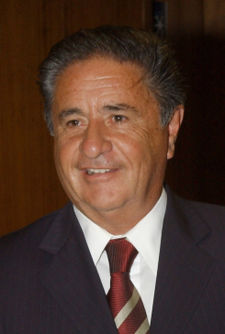 |
Eduardo Duhalde Eduardo Duhalde -External links:... (born 1941) |
2 January 2002 | 25 May 2003 | Elected by the Assembly, with instructions to complete the original mandate of De la Rúa Fernando de la Rúa Fernando de la Rúa is an Argentine politician. He was president of the country from December 10, 1999 to December 21, 2001 for the Alliance for Work, Justice and Education .... . Restored the economy of Argentina after the 2001 crisis. Resigned after a political controversy generated by the deaths of demonstrators Maximiliano Kosteki and Darío Santillán. |
|
| PJ Justicialist Party The Justicialist Party , or PJ, is a Peronist political party in Argentina, and the largest component of the Peronist movement.The party was led by Néstor Kirchner, President of Argentina from 2003 to 2007, until his death on October 27, 2010. The current Argentine president, Cristina Fernández de... |
||||||
| 51 | 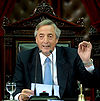 |
Néstor Kirchner Néstor Kirchner Néstor Carlos Kirchner was an Argentine politician who served as the 54th President of Argentina from 25 May 2003 until 10 December 2007. Previously, he was Governor of Santa Cruz Province since 10 December 1991. He briefly served as Secretary General of the Union of South American Nations ... (1950–2010) |
25 May 2003 | 10 December 2007 | Free direct elections. The law that allowed Duhalde Eduardo Duhalde -External links:... to resign gave the new president both the four-year mandate and the remaining months of the De la Rúa Fernando de la Rúa Fernando de la Rúa is an Argentine politician. He was president of the country from December 10, 1999 to December 21, 2001 for the Alliance for Work, Justice and Education .... mandate. Kirchner lost the first round to Carlos Menem Carlos Menem Carlos Saúl Menem is an Argentine politician who was President of Argentina from 1989 to 1999. He is currently an Argentine National Senator for La Rioja Province.-Early life:... , but the latter refused to run the second round Two-round system The two-round system is a voting system used to elect a single winner where the voter casts a single vote for their chosen candidate... that should have followed. |
|
| FPV – PJ Justicialist Party The Justicialist Party , or PJ, is a Peronist political party in Argentina, and the largest component of the Peronist movement.The party was led by Néstor Kirchner, President of Argentina from 2003 to 2007, until his death on October 27, 2010. The current Argentine president, Cristina Fernández de... |
||||||
| 52 | 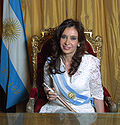 |
Cristina Fernández de Kirchner Cristina Fernández de Kirchner Cristina Elisabet Fernández de Kirchner , commonly known as Cristina Fernández or Cristina Kirchner is the 55th and current President of Argentina and the widow of former President Néstor Kirchner. She is Argentina's first elected female president, and the second female president ever to serve... (born 1953) |
10 December 2007 | Incumbent | Free direct elections. Incumbent. First female president of Argentina elected as head of the list. | |
| FPV – PJ Justicialist Party The Justicialist Party , or PJ, is a Peronist political party in Argentina, and the largest component of the Peronist movement.The party was led by Néstor Kirchner, President of Argentina from 2003 to 2007, until his death on October 27, 2010. The current Argentine president, Cristina Fernández de... |
||||||
Affiliations
| Alianza | Alianza por el Trabajo, la Justicia y la Educación Alliance for Work, Justice and Education The Alliance for Work, Justice and Education was a party coalition in Argentina around the turn of the third millennium... |
Alliance for Work, Justice and Education (1997–2001) (UCR Radical Civic Union The Radical Civic Union is a political party in Argentina. The party's positions on issues range from liberal to social democratic. The UCR is a member of the Socialist International. Founded in 1891 by radical liberals, it is the oldest political party active in Argentina... , FREPASO) |
| Aut | Partido Autonomista | Autonomist Party (1862–1874) |
| Conc | Concordancia Concordancia (Argentina) The Concordancia was a political alliance in Argentina. Three Presidents belonging to the Concordance were in power from 1931 to 1943, a period known in Argentina as the "Infamous Decade."... |
Concordance (1931–1943) (UCR-A, PSI, PDN National Democratic Party (Argentina) The National Democratic Party, or Partido Demócrata Nacional was an Argentine conservative party created in 1931 which disappeared after 1955. It was generally known simply as the Conservative Party, or Partido Conservador... ) |
| Fed | Federal Federales (Argentina) Federales was the name under which the supporters of federalism in Argentina were known, opposing the Unitarios that claimed a centralised government of Buenos Aires Province, with no participation of the other provinces of the custom taxes benefits of the Buenos Aires port... |
XIXth Century Federals |
| FJL | Frente Justicialista de Liberación Nacional (FREJULI) | Justicialist Front for National Liberation (1972–1974) |
| FPV | Frente para la Victoria Front for Victory The Front for Victory is a Peronist political party and electoral alliance in Argentina, although it is formally a faction of the Justicialist Party. Both the former President Néstor Kirchner and the current President Cristina Fernández de Kirchner belong to this party, located on the left-wing... |
Front for Victory (since 2003) |
| Lab | Partido Laborista Labour Party (Argentina) The Labour Party was a political party in Argentina. The party was founded by Peronist trade union leaders at the end of October 1945. The party organization was built up around the Peronist unions, and most of its representatives in different elected offices had been recruited from the ranks of... |
Laborist Party (1945–1947) |
| Lib | Liberal | XIXth Century Liberals |
| Mil | Military | Acting on behalf of the Armed Forces |
| Mod | Partido Autonomista Nacional (línea modernista) | National Autonomist Party -Modernist (1892–1916) |
| PAN | Partido Autonomista Nacional National Autonomist Party The National Autonomist Party was an Argentine political party during the 1874-1916 period. Created on March 15, 1874 by the union of the Autonomist Party of Adolfo Alsina and the National Party of Nicolás Avellaneda... |
National Autonomist Party (1874–1916) |
| PDN | Partido Demócrata Nacional National Democratic Party (Argentina) The National Democratic Party, or Partido Demócrata Nacional was an Argentine conservative party created in 1931 which disappeared after 1955. It was generally known simply as the Conservative Party, or Partido Conservador... |
National Democratic Party (1931–1955) |
| PJ | Partido Justicialista Justicialist Party The Justicialist Party , or PJ, is a Peronist political party in Argentina, and the largest component of the Peronist movement.The party was led by Néstor Kirchner, President of Argentina from 2003 to 2007, until his death on October 27, 2010. The current Argentine president, Cristina Fernández de... |
Justicialist Party (founded 1947) |
| UCR | Unión Cívica Radical Radical Civic Union The Radical Civic Union is a political party in Argentina. The party's positions on issues range from liberal to social democratic. The UCR is a member of the Socialist International. Founded in 1891 by radical liberals, it is the oldest political party active in Argentina... |
Radical Civic Union (founded 1891) |
| UCR-A | UCR Antipersonalista | Anti-Yrigoyenist UCR (1924–1946) |
| UCRI | Unión Cívica Radical Intransigente Intransigent Radical Civic Union The Intransigent Radical Civic Union or UCRI is a defunct political party of Argentina.The UCRI developed from the centrist Radical Civic Union in 1956, following a split at the party's convention in Tucumán... |
Radical Civic Union -Intransigent (1956–1972) |
| UCRP | Unión Cívica Radical del Pueblo Radical Civic Union The Radical Civic Union is a political party in Argentina. The party's positions on issues range from liberal to social democratic. The UCR is a member of the Socialist International. Founded in 1891 by radical liberals, it is the oldest political party active in Argentina... |
Radical Civic Union of the People (1957–1972) |
| Unitarian | Unitario Unitarian Party Unitarianists or Unitarians were the proponents of the concept of a Unitary state in Buenos Aires during the civil wars which shortly followed the Declaration of Independence of Argentina in 1816. They were opposed to the Argentine Federalists, who wanted a federation of independent provinces... |
XIXth Century Centralists |
| [ edit this box] | ||
See also
- President of ArgentinaPresident of ArgentinaThe President of the Argentine Nation , usually known as the President of Argentina, is the head of state of Argentina. Under the national Constitution, the President is also the chief executive of the federal government and Commander-in-Chief of the armed forces.Through Argentine history, the...
- Politics of ArgentinaPolitics of ArgentinaThe politics of Argentina take place in the framework of what the Constitution defines as a federal presidential representative democratic Republic, where the President of Argentina is both Head of State and Head of Government. Legislative power is vested in both the President and the two chambers...
- List of Vice-Presidents of Argentina
- Lists of incumbents
External links
- Rulers.org — Argentina list of rulers for Argentina

